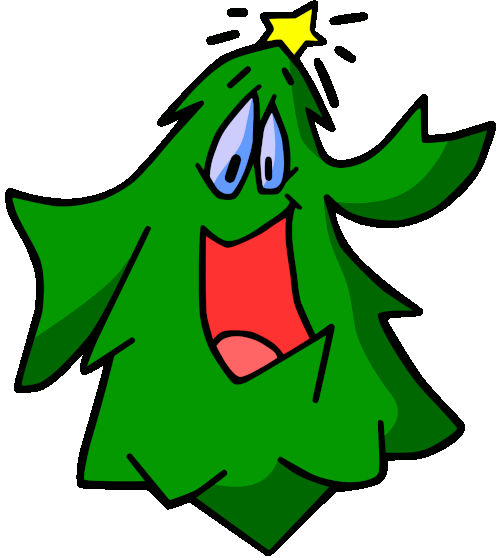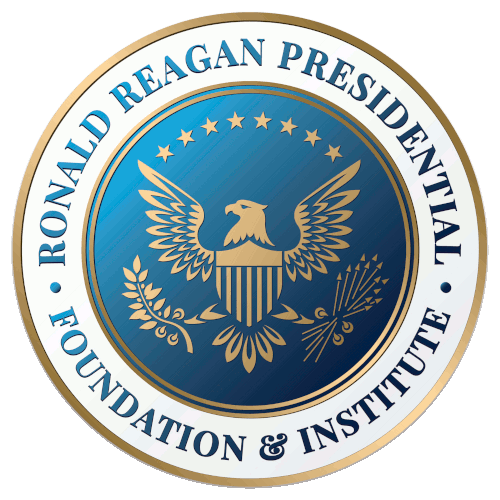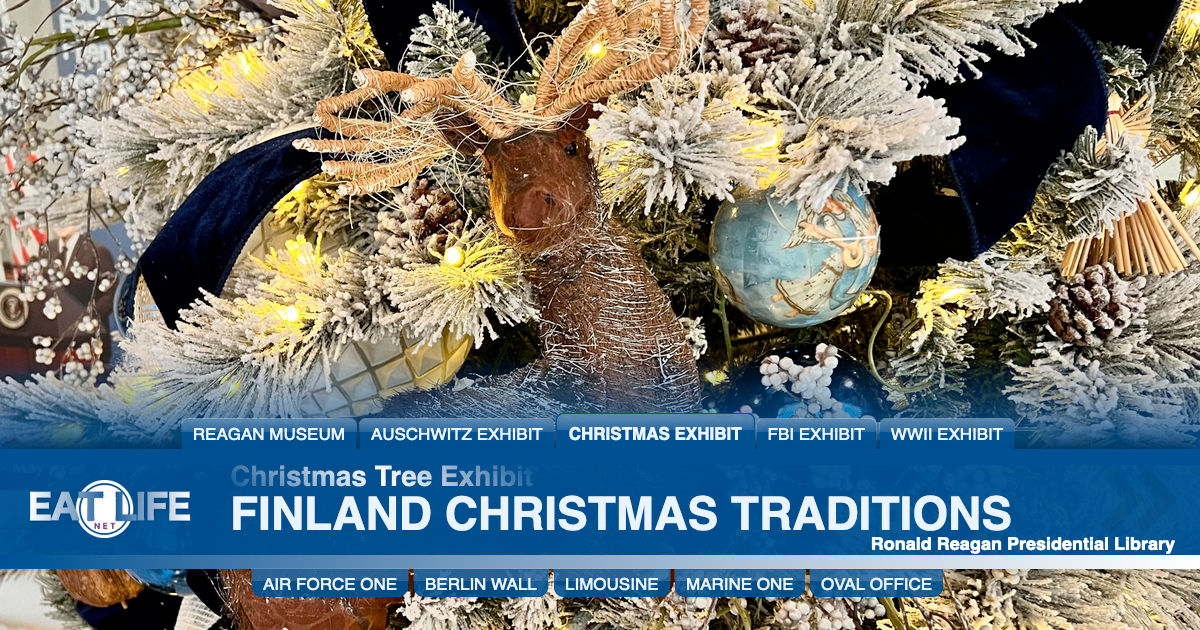Santa Claus, or Father Christmas, lives in the northern part of Finland called Korvatunturi, or Lapland, north of the Arctic Circle. In Finland, Santa is called Joulupukki (Christmas Goat). It was traditional in Finland that there was a Yule Goat who was scary and asked people for presents. Over time the goat became a gift giver and a human rather than a goat, but the name was kept.
FINNISH CHRISTMAS
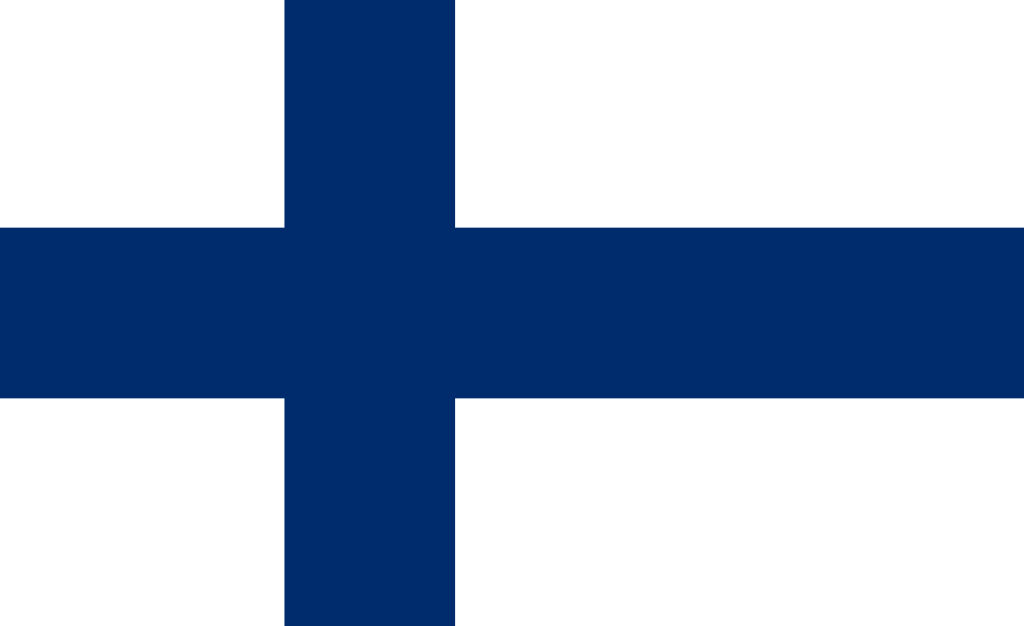
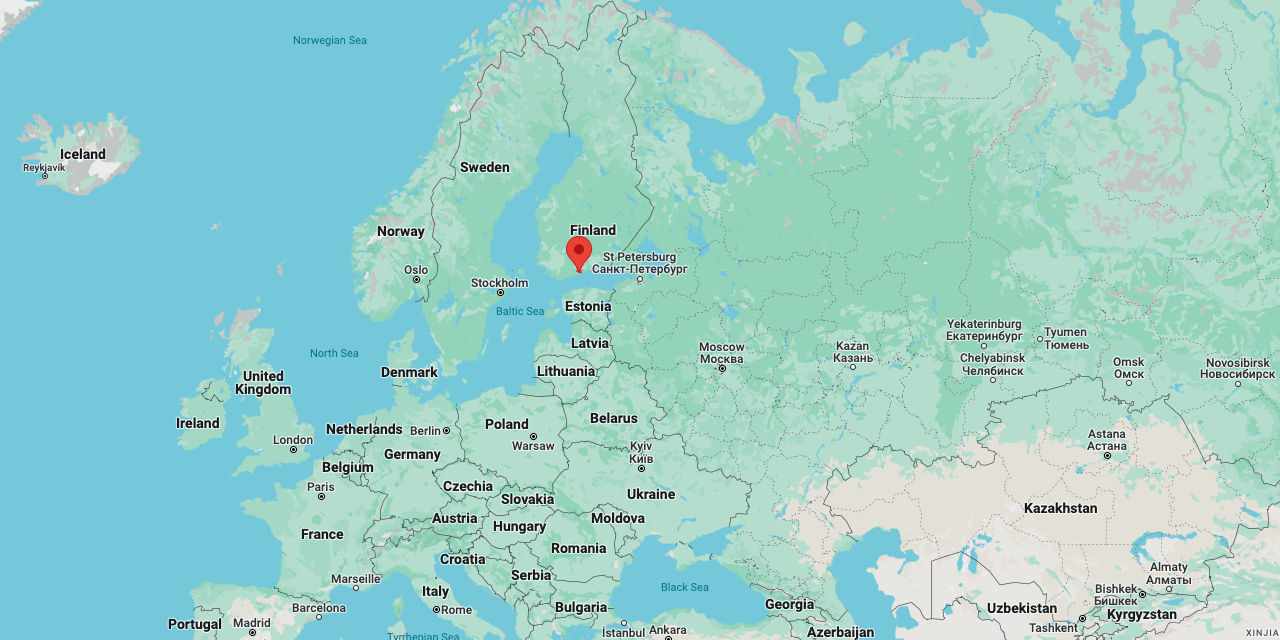
https://www.google.com/maps/place/Finlandia+Hall
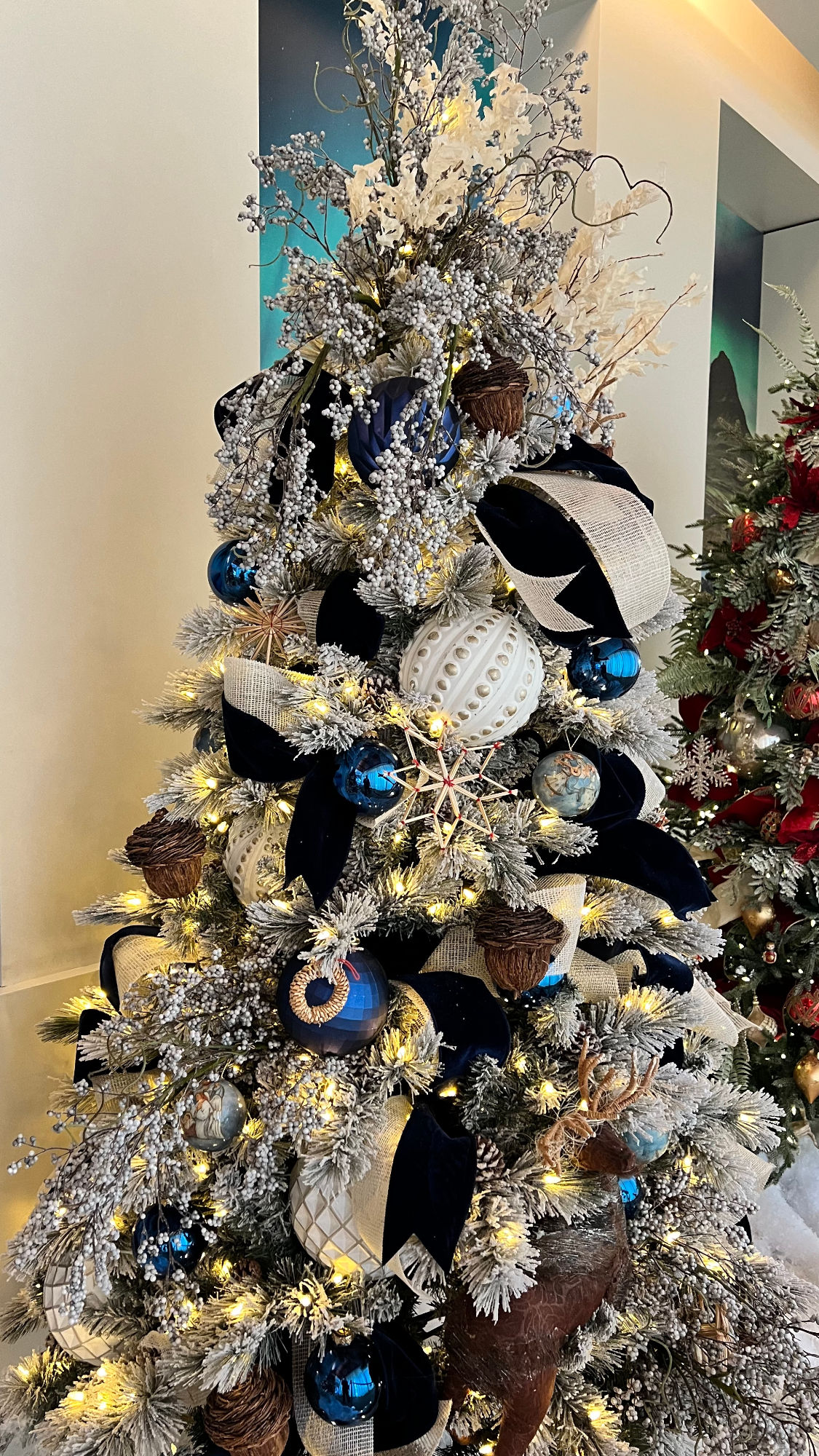
| HOW TO SAY MERRY CHRISTMAS: | |
|---|---|
| In Finnish | Hyvaa Joulua |
| In Swedish | God Jul |
In Finland, Santa is called Joulupukki. This literally means 'Christmas Goat' (Joulu means Christmas and Pukki means goat (or buck) as it was traditional in Finland that there was a Yule Goat who was scary and asked people for presents - and certainly didn't give any out! Joulupukki might also be called just 'Pukki'!Over time the goat became a gift giver and a human figure rather than a goat, but the name of the 'Christmas Goat' was kept. Joulupukki rides with reindeer and leaves gifts under the Christmas tree but if you have been naughty you could end up with a bag of coal!
Finnish people believe that Joulupukki (Santa Claus or Father Christmas) lives in the north part of Finland called Korvatunturi (or Lapland), north of the Arctic Circle. People from all over the world send letters to Santa Claus in Finland. There is a big tourist theme park called 'Christmas Land' in the north of Finland, near to where they say that Father Christmas lives.
It means that Joulupukki/Santa doesn't have far to travel on Christmas Eve to deliver presents to people in Finland! If he doesn't get a chance to deliver the presents personally, he will often leave them under the Christmas Tree.
- In Finnish Happy/Merry Christmas is 'Hyvaa joulua'. In North-Sami, spoken in northern parts of Norway, Sweden, Finland and Russia, it's 'Buorit Juovllat'.
- Everyone tries to be at home for Christmas, including fishermen who try to get their boats into the harbor by December 21st, St. Thomas' Day
- Animals are given their own Christmas in Finland, with farmers sometimes hanging a sheaf of wheat on a tree to be eaten and pecked at by the birds. Nuts and pieces of suet are also hung on trees in bags from the branches.
- Everyone cleans their houses ready for the three holy days of Christmas - Christmas Eve, Christmas Day, and Boxing Day.
- On Christmas Eve, or the day before, Christmas trees are bought from the local market or square. The seller expects you to bargain with them on the price.
Christmas Eve is very special and the most important day over Christmas. It's traditional to eat rice porridge and plum fruit juice for breakfast. Then the tree is bought (if it hasn't been already) and is decorated. At midday, the 'peace of Christmas' is broadcast on radio and TV by the City Mayor of Turku (which is south Finland). Also, like in Sweden, the 1958 Disney special "From All of Us to All of You" is shown on the TV in the afternoon on Christmas Eve.
WHYCHRISTMAS.COM Because it gets dark very in most parts of Finland around Christmas (about 3:00pm) it's now traditional to go cemeteries and visit the graves of family members. Some cemeteries are enormous and police are on duty to manage the traffic, but everyone must walk the last few yards to the grave. Candles in hanging lanterns are left around the grave, often lots of family members go. The whole cemetery is alight with glowing lanterns shining in the snow - a winter wonderland.Other people like a sauna on Christmas Eve.
The main Christmas meal is eaten in the early evening. Lutefish (salt fish) is the traditional starter, but is not so common nowadays. The main meal is a leg of pork served with mashed potato traditionally baked slowly in birch-bark boxes in the oven with similarly cooked mashed swede. Casseroles containing different vegetables including, rutabaga, carrot and potato are also common. Cured salmon is very popular and some people also have turkey. Dessert is baked rice pudding/porridge eaten with spiced plum jam. One almond is hidden in the pudding. Whoever find the almond will be lucky for the next year.
After the meal, Joulupukki (Santa) might visit the house! When he comes in with his sack he asks if any children are living there. They reply very loudly! Next then asks if they have been good all through the year. When they are given their presents the whole family gathers to watch the fun of opening. After opening some presents, it's time to go to bed - but some people like to stay up all night to see Christmas Day arrive!
Christmas Day is much quieter with families usually spending it quietly at home. On Boxing Day people like to go out. Skiing is popular along the flat terrain or skating if the lake or river has frozen.

Culture TripThe Lapin Taika
Did you know Santa Claus is Finnish and lives in Lapland? The Lapin taika (Finnish for the Magic of Lapland) can be seen in the expansive natural beauty of the land, its cultural treasures, the legends of the Sami people and not to mention Santa’s North Pole hideaway. Here is a guide to all the must-see, must-do and must-eat things in Lapland for the most magical winter experience.Home of Santa Claus
Rovaniemi, the capital city of Finnish Lapland is the largest populated city near the Arctic Circle as well as the hometown of Santa Claus. However, there is much more to Lapland than being the North Pole hideaway of Santa Claus. There are many beautiful resorts, cities as well as cultural treasures to visit. If you’re looking for a magical Christmas experience, this is the place to go – and even if it’s not Christmas, you’ll still have an incredible time on Culture Trip’s five-day, action-packed Lapland adventure which departs in spring.Along the river and around the city of Rovaniemi, you can find 70 lean-to shelters that can be freely used to roast sausages or snacks over an open fire. Firewood is even provided by the stae. Along Ounasjoki, the longest river in Finland, you can see beautiful views of the Jatkankynttila Bridge, especially when illuminated at night.
The Arctic Circle Post Office, located in Rovaniemi, receives more than half a million Christmas letters every year from all over the world. Each year, Santa Claus leaves the village in a reindeer-drawn sleigh to deliver presents to children, and his send-off is broadcast internationally on 23 December. All letters received with a clearly legible address are answered by Santa and receive a special stamp leaving the post office. If you want to send in your wish list for this year, you can reach Santa at: Santa Claus, Santa Claus’s Main Post Office, 96930 Napapiiri, Finland.
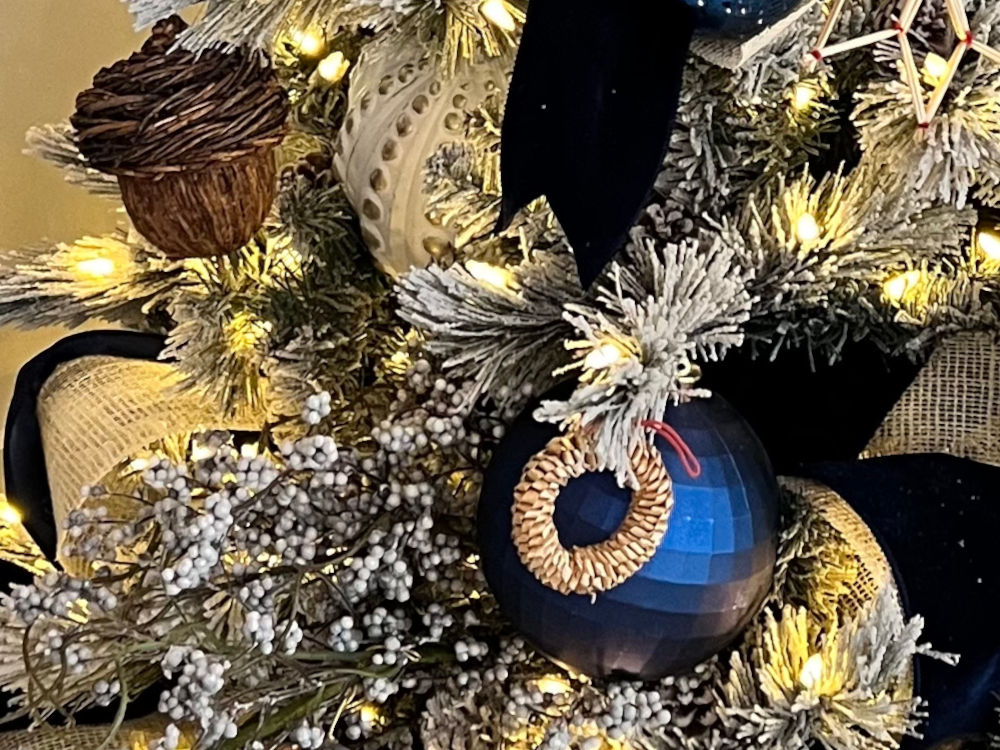
WIKIPEDIAJoulupoyta
Traditional assortment of foods served at Christmas in Finland. It contains many different dishes, most of them typical for the season.The main dish is usually a large Christmas ham, which is eaten with mustard. The ham is served with beetroot-carrot-potato-salad called rosolli, mushroom salad and casserole (laatikko) made with swede, carrot or potato or all three kind of casseroles, occasionally also a liver casserole. Gravlax and herring is also often served, and sometimes lutefisk (lipeakala) along with boiled potatoes, peas and ryebread.
Christmas dessert consists of prune jam tarts, gingerbread and rice porridge with plum kisel. The traditional dessert beverage is alcoholic or non-alcoholic mulled wine (glogi in Finnish).
Most popular dishes in Finnish Christmas table are:
- Christmas ham with mustard
- Rutabaga casserole
- Carrot casserole
- Potato casserole (sweetened or not, depending on the region and preference)
- Rosolli - salad from boiled beetroots, carrots, potatoes, usually also apples and pickled cucumber. Served with a sour cream based sauce and sometimes with eggs or herring
- Potatoes (boiled or smashed)
- Rye bread
- Lax (usually Gravlax), Pickled herring and roe, often served with chopped onion and sour cream
- Mushroom salad
- Boiled peas
- Liver casserole
- Karelian stew
- Lipeakala with melted butter and white sauce
Beverages most often served are:
- Schnapps such as Koskenkorva Viina as an appetizer
- Beer. Most Finnish breweries have also seasonal beers for Christmas. Homemade non-alcoholic beer is also common.
- Milk
- Mulled wine (glogi) either alcoholic or non-alcoholic
- Coffee - the Finns prefer a mild roast; tea is less common.
Most popular desserts in Finnish Christmas table are:
- Prune jam pastries also known as joulutorttu
- Gingerbread called piparkakku - commonly as flower or star shaped, and sometimes even as 3-dimensional houses, that are decorated with sugar
- Confectioneries and other sweets, especially chocolates and fruit marmalade candies
- Rice porridge (riisipuuro) with cinnamon, sugar and cold milk or with raisin or mixed fruit soup (Usually the rice porridge is served from a large, common kettle and an almond has been hidden in it. The one who gets the almond gets his or her Christmas presents first or gets a wish. Sometimes rice porridge is served as breakfast.)
- Glogi, glogi is usually served with almonds and raisins in it and is alcoholic or non-alcoholic
- Mixed fruit soup or kiisseli which is a plum runny dessert commonly served with rice porridge or sometimes with whipped cream
- Fruit- date- or other type of cake
- Coffee - the Finns prefer a mild roast; tea is less common.
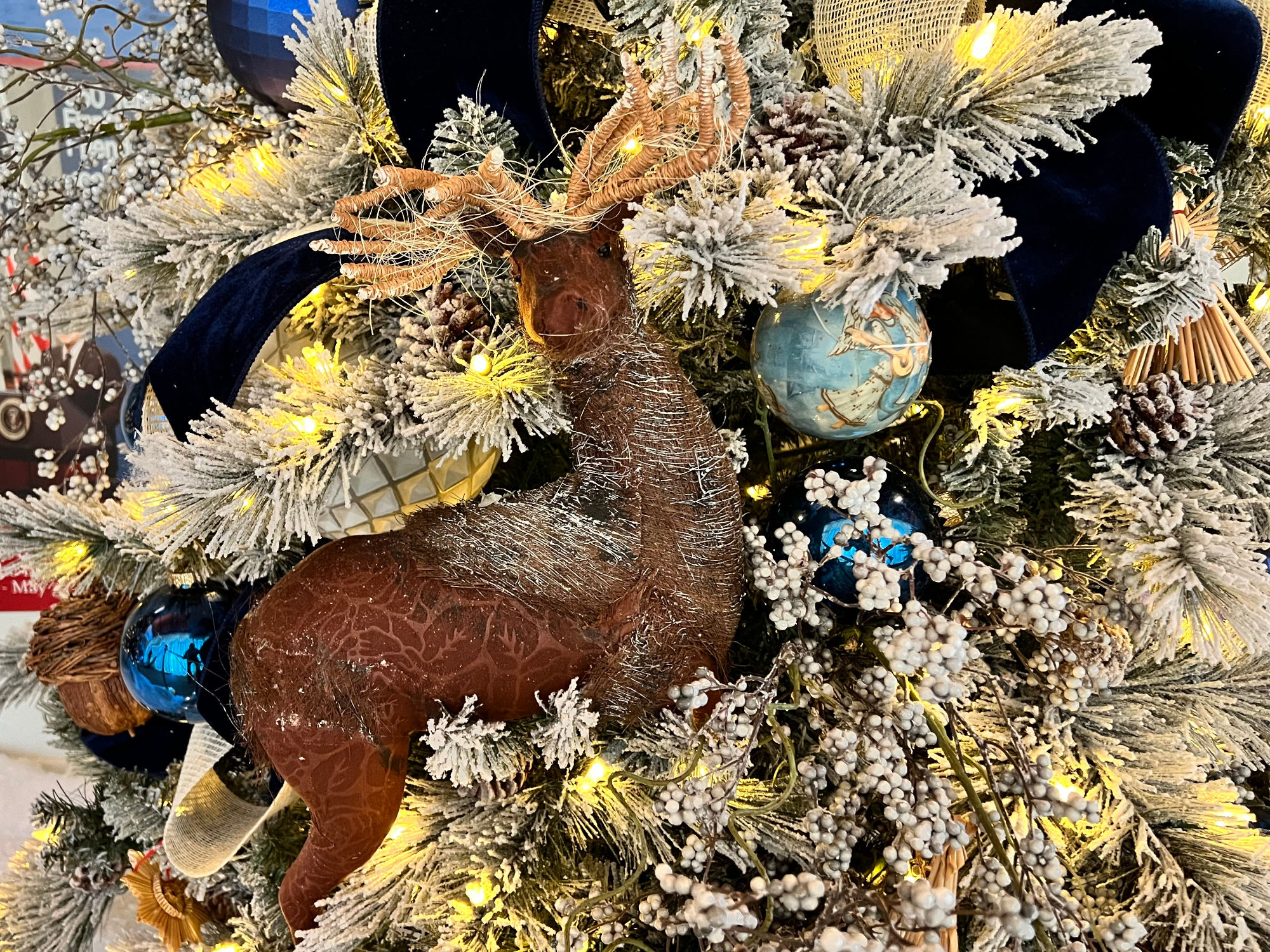
WORLD HOLIDAY TRADITIONSHoliday Traditions of Finland
In Finland, the first Sunday in December is called the First Advent, and marks the beginning of the Christmas season. Advent calendars help count down the days to Christmas Eve.Shortly after on December 13th is St. Lucia Day, named for a 3rd century martyr who Brough food to Christians in hiding. She used a candle-lit wreath to light her way, leaving her hands free to carry as much food as possible. Celebrated with candles. The oldest girl in the family portrays St. Lucia, wearing a white robe and a crown of candles. She serves her parents buns, cookies coffee, or wine. Around this time, Finns begin shopping for a Christmas tree to decorate, and start to exchange Christmas cards.
Santa Claus, or Father Christmas, lives in the northern part of Finland called Korvatunturi, or Lapland, north of the Arctic Circle. People from all over the world send letters to Santa Claus in Finland. There's even a theme park called Christmas Land in the north of Finland, close to where Santa is said to live.
Santa Claus may also be called Joulupukki, which means Christmas Goat. In old Finland tradition, there was a Yule Goat who would ask for presents, rather than give them. Eventually the goat became the gift giver, and Santa usurped this role, but the name Christmas Goat remained. Santa rides in his reindeer sleigh, leaving gifts for good children under the Christmas tree, and leaving coal for the naughty children.
Everyone tries to be home for Christmas, including fishermen, who try to get their boats to harbor for December 21st, St. Thomas' day. Farmers will sometimes hang a sheaf of wheat, along with bags of nuts and pieces of suet, on the branches of trees to be eaten by the birds.
Because it gets very dark early in the day around Christmas in many parts in Finland (around 3PM), it's a tradition to go to cemeteries to visit the graves of family members. Some cemeteries are so large, there are police on duty just to manage the traffic, and everyone must walk to last few yards to the grave. Glowing lanterns left around the graves light up the cemetery.
Others like to visit saunas on Christmas Eve.
The main Christmas meal is eaten in the early evening. Lutefish, or salt fish, is a traditional first course. The main course is a leg of pork served with mashed potatoes, baked slowly in birch-bark boxes with similarly cooked mashed swede. Other common Christmas dishes include casseroles made of different vegetables like rutabaga, carrot, and potato, cured salmon and turkey, and beetroot salad. Dessert is rice pudding and porridge eating with spiced plum jam. One almond is hidden in the pudding, and whoever finds it will be lucky in the new year.
After the meal, Santa arrives, and it's time to open presents. The whole family gathers to watch the fun. Christmas Day is much quieter, usually spent together with family. The Christmas season does not officially end until after January 6th, or Epiphany.

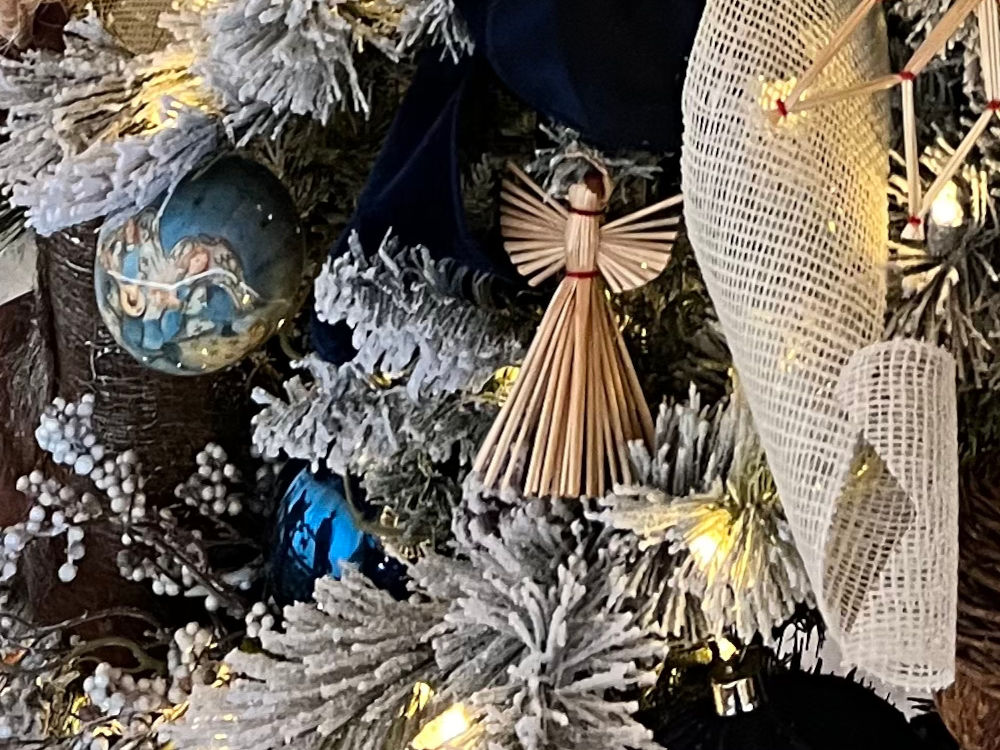
Culture TripFinnish Lapland is the perfect spot for a winter break, for its unparalleled landscapes, exciting winter sports, fascinating local culture, and of course a chance to visit Santa. But there are many more tales and pieces of folklore from the region you might not have heard of. Some of them have shaped the Christmas traditions and stories we know today. These are just some of them.How the Northern Lights came to be
The Northern Lights have a mystical aura to them and scientists are still uncovering their secrets. Every culture has their own origin story for the aurora borealis, and the Finnish Sami people are no exception. They believed that the lights were caused by a firefox running through the snow so quickly that its fur brushed against the night sky, giving off sparks which caused the aurora. The Finnish word for the Northern lights, revontulet, even translates to ‘firefox’.Spiritual Messages on Polar Night
A polar night, or kaamos, is any period in which the night lasts for more than 24 hours. North of the Arctic Circle, it can last for two months at a time, with the sun appearing for as little as two hours each day. It was a highly spiritual time during the Finn-pagan era when the Northern Lights were associated with the spirit world. They even believed that the lights could deliver messages from the dead on polar night.The Souls of the Dead
Another Sami belief was that the Northern Lights were made up of the souls of the dead, so they showed great respect whenever the lights appeared. It was considered disrespectful to gaze directly into the lights or speak too loudly around them. Anybody who broke these rules was said to bring bad fortune upon themselves and their families.The Land of the Birds
Centuries ago, Finns thought that the world was flat and didn’t know about migration. Therefore, it caused them a great deal of confusion when the birds suddenly disappeared during the autumn and came back during the spring. They believed that they went to lintukoto or The Land of the Birds. Today, lintukoto is a Finnish word which means ‘happy place’ or ‘paradise’.The Yule Goat
There are many different origins of the Santa Claus mythos. One of them was a figure known as the ‘Yule goat’, which referred to his long white beard which resembled a goat’s beard. It is believed that the Yule Goat was inspired by the Norse god Thor, who drove a chariot driven by two goats. Straw goat ornaments are still used as Christmas decorations throughout Scandinavia, and used to be left at neighbors’ doorways as pranks. The red coat and reindeer sleigh also originate from this figure.The Goat Man
One ‘Yule goat’ myth was that he was a regular man who was turned into a goat on Christmas eve. This myth was included in Swedish author Elsa Beskow’s book Peter and Lotta’s Christmas. It’s likely that this myth was changed to something friendlier as it was considered too frightening for children.Lapland Elves
It isn’t only Santa who originates from Lapland mythology, but his elves too. Creatures known as tonttu, which were similar to gnomes or dwarves, they were said to hand out gifts and wear pointed red hats. This evolved into the image of Santa’s elves, although classic tonttu still appear on Christmas cards and illustrations in Scandinavia. Older myths said that tonttu were mischievous spirits who would steal if they were disrespected. The practice of leaving out a bowl of porridge to appease or thank the tonttu also lent itself to the modern-day practise of leaving out cookies and milk for Santa.The Evil Christmas Spirits
Not all of the ancient Christmas mythological figures were good. The nuuttipukki were evil spirits, or sometimes men dressed up in terrifying goat costumes, who went from house to house demanding presents or leftovers, particularly alcohol. This was later changed to the friendlier idea that they gave gifts, rather than demanded them, which became the modern Christmas tradition.The Old Crone of the North
Reindeer are still an integral commodity in Lapland, and even more so in ancient times when there was less access to food. Finn-pagans would pray to the Old Crone of the North to send plenty of reindeer and other game to hunters so that they would have enough to eat during the winter.The Maiden From Turja
This ancient figure was said to sail over the frozen ocean in a red boat carrying a kettle full of ice which could heal burns. In another version of the tale, the kettle is carried by a tiny man who emerges from the sea.Ancient Christmas Spells
You can read several old spells and ‘magic songs’ of ancient Lapland collected in The Magic Songs of the Finns by Elias Lonnrot, the same author who compiled The Kalevala. It is a fascinating read for anyone interested in Scandinavian folklore. Among them are spells against sharp frost, for catching reindeer, and one for a good sleighing road, which goes:
O Ukko, let some fresh snow fall
Sprinkle some fine fresh fallen snow
Snow for a sleigh to glide along
Fresh snow along which a sledge can dash
Hide the berry stalks upon the ground
The stalks of heather cover up

Reddit r/FinlandWhat are normal Finnish Christmas traditions?
One of my best friends has invited me to spend Christmas with her and her family, by family I mean everyone, Brothers, sisters, aunts, uncles, Cousins, granparents etc.What should I expect to see/do and what should I bring with me? Is it normal to bring gifts? I want to because I am very thankful to not be spending Christmas alone, but I dont know what is right or appropriate.
If geographical differences matter, she lives in a town in the South-East Coast near the Russian border.
Are there any taboos that should be avoided and things I should definitely do?
Thank you for any help.
Not I am from Germany so I won't be able to bring rare American things to Finland if there is something like that which is popular.
<3 Kiitos
- Christmas Eve:
In the morning there will be Christmas show for the kids on the tv, with Santa taking calls from the children, they sing to him on the phone, there are tons of Christmas cartoons etc. Usually the adults of the family prepare Christmas foods at this time, make last minute decorations etc.
At about noon or so people may venture out and go to the cemeteries to bring candles to the graves of deceased relatives.
There might be some late rush to the store to buy milk or other food stuff one forgot, but I would strongly avoid stores on Christmas Eve, no thank you :-)
In the late afternoon/early evening there will likely be Christmas sauna. Men and women go separately, friends go with friends, little kids go with their closest family/mom/dad etc.
After the sauna there will be a traditional Christmas dinner with foods like salmon, different casseroles, mashed or whole potatoes, gravy, and of course ham and mustard. Heavy, hearty food that will fill you up really quickly. Afterwards there will be coffee and Christmas cookies.
After this it is the time to open the presents. If there are small kids in the family, the dad might excuse himself from the company and disappear somewhere, suddenly there is rapping in the windows and stomping outside, the dad returns with sacks of presents and say something like "i went outside and would you believe there was Santa! He said he was in a terrible hurry, so he left me with all these presents."
There might also be an actual Santa visit by a relative or a paid performer. Little kids may sing to him.
The presents are stacked under the Christmas tree, and if the kids can read, they might distribute the gifts, or some other designated person does that. It is even possible that you get to do this ;-)
Then you make a ton of garbage by tearing up all the wrapping papers, I need scissors, where are the scissors, someone bring that box so we can put all the wrappers in there etc.
After this it is just messing around with the gifts, watching tv, more eating, more coffee, conversation, maybe some drinking etc. until everyone gets drowsy from all the eating and crawls to bed.
Christmas Day:
You sleep super late, and basically do what you want the rest of the day. Relax, take a walk outside, consume even more ham and mustard, watch movies, go to movies in an actual movie theater, likely another round of sauna etc.
Obviously the exact traditions and the order of the events will vary depending on the family in question, but something like this is what you should expect in general.
As for gifts, it is perfectly acceptable to just buy a packet or two of chocolate confectioneries, or even packs of coffee, and wrap them up. The stores are full of these for about two months before Christmas, and there might even be a dedicated Christmas wrapping service in the bigger stores, so you don't have to do it yourself. Chocolate is always appreciated, and as a non-relative / distant relative you're not really even expected to bring super expensive or fancy gifts for everybody individually. You can buy something small and nice for your friend, if you like, though.
There aren't really any huge unforgivable social gaffes you can make, just be your normal self. Finns may be shy to talk to you, because they may believe that their English isn't that good, and the elder family members might not speak English at all. Plus Finland isn't a very talkative culture in the first place. So don't take it too personally if you find that not too many people actually talk with you. It's not about you personally, they don't hate you, they are just self-conscious about their language skills + culture.
- Please don't miss these essential things:
With a bit of luck, you might see the real Santa!
- Santa's hotline on TV from 8am. Santa takes phone calls from children live on air on the 24th.
- The declaration of Christmas Peace live on air from Turku on the 24th. Check listings for time, should be around 11-12am.
- Playing board games and drinking wine into wee hours.
- Lebkuchen and marzipan. We have too little of that. Especially Lebkuchen.
If your region of Germany has good Gluhwein that might be appreciated. Not everyone likes the continental type of Gluhwein (prefering the horrible spiced warm cordial with a shot of booze that is too often meant by "glogi" here), but if it is a larger family gathering there's bound to be at least one or two who'll appreciate it.
It might be worth mentioning that there are some considerable cultural differences wrt Christmas also within Finland. To some extent it follows language, but also geography plays a part - and these factors might be two or three generations back, so it's really hard know in advance. So just go with the flow and don't be upset if it is either very somber and lots of songs in minor keys or irritatingly gay and jumping around the christmas tree like maniacs ;-)
- You could bring maybe some wine, coffee, chocolate or something like that for the hosts if you're not giving personal presents to the people there. So something that you can all eat together would be a nice gesture of grattitude in exchange for you getting to eat all the Christmas foods. Also candles or candle holders that are festive-ish might be nice.
Do also bring your Christmas spirit with you and maybe something belonging to your own country's Christmas traditions might be very interesting to them. But don't stress too much, I think finns are generally pretty relaxed and don't expect anything fancy, so just be yourself and be open and kind and all should go well!
- It's a very much get silent with the close family members kind of party. Swedes sometimes openly mock how "gloomy" it is from their perspective.
In some families it's traditional for the adult males to be relatively drunk, other families consider it too sacred for that. The cuisine is very fixed, ham is essential though some prefer turkey. It's not uncommon to have both. Most consider some sort of casserole and fish dish to also belong into the essential cristmast eve feast. Pickled herring and or gravlax. The bravest ones will include lute fisk and liver casserole.Try to leave some space for the dessert porridge.
Also an observation about the food: the old people of retired age like to have "exotic" things at christmas, like my granny always has liver pate, olives, blue cheese type of things which she otherwise wont have. That's a traditional thing also, from the times when such things needed some effort to acquire. It's really all about the traditional christmas dish, with layers upon layers from so many different era's:
Also sauna is essential, everyone with access will have a cristmas sauna. Anyone christian will generally go to church at least in evening of 24 th.
- starting from the era, when meat and anything sweet was luxury (the casseroles and ham)
- in inland any fish was considered a treat, even "cristmas pike" is a thing
- next is foreign things, starting from such essentialities as coffee, dates (sweet date cake is a west coast thing), cognac or mulled wine, oranges, marmelades, dried fruits and the rice used for porridge and in casseroles. All these are associated with cristmas, as well as spices, like in ginger bread that have a mix of various. Especially cinnamon is associatedf with christmas.
- They will probably ask you about German Christmas traditions, so it might be a good idea to have some kind of an answer prepared. Maybe bring some traditional Christmas candy from Germany or something like that? If they're shy, that might be a good conversation starter. If you want to bring gifts, you absolutely can, but avoid anything too fancy or expensive, that might make them uncomfortable. You can just bring a gift for the host(s) and your friend, if you don't know who else will be there.
Some families like to watch a lot of television during Christmas. If you notice them going quiet during a certain tv show (most likely Joulurauhan julistus or Snowman/Lumiukko), you should try to be quiet too. It's weird, but certain Christmas shows are really important to some people.
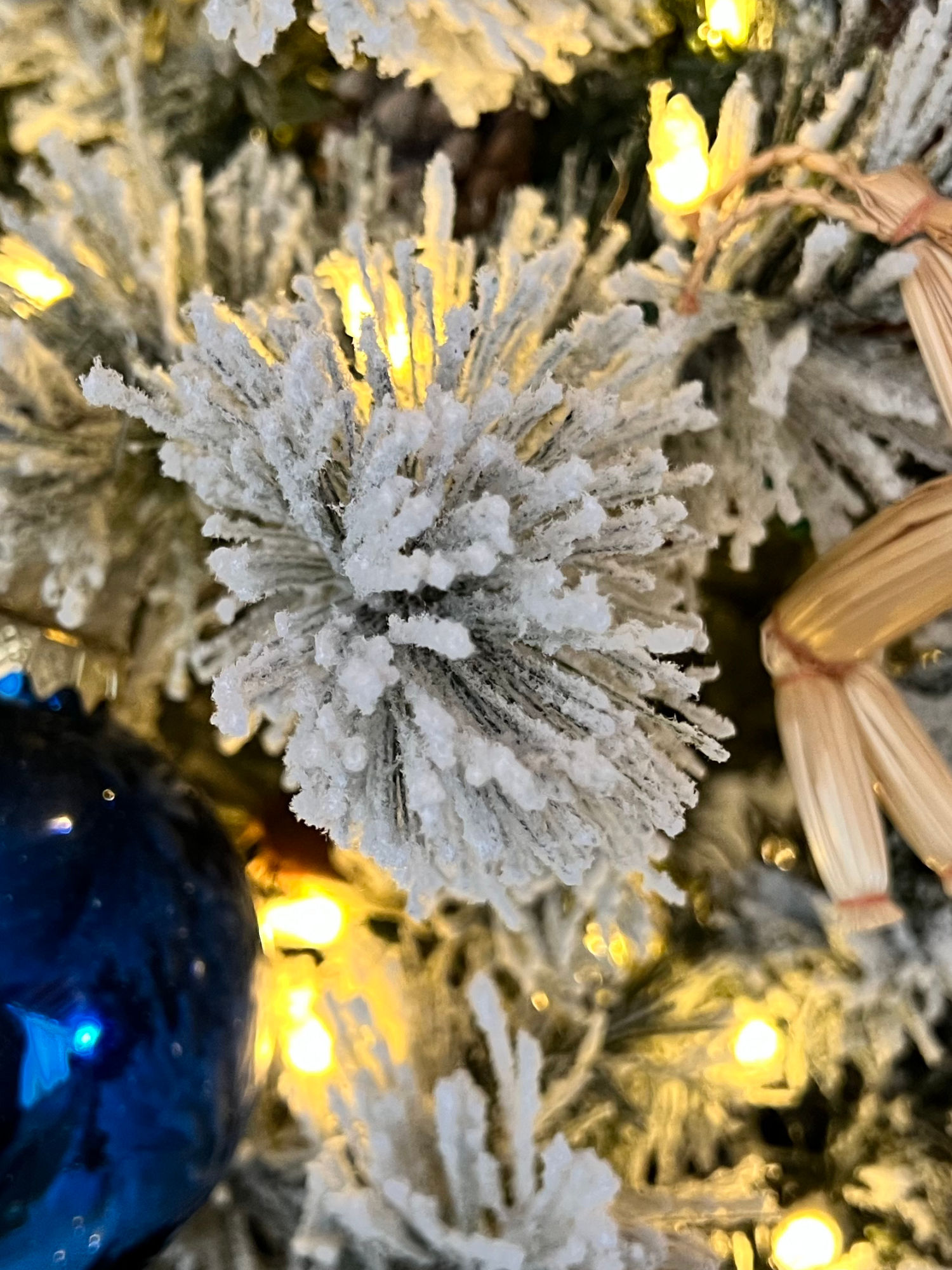
WIKIPEDIAChristmas in Finland
begins, as is commonplace on public holidays in Finland, on Christmas Eve (Finnish: jouluaatto; Swedish: julafton). Especially the evening of Christmas Eve has become the most important day of the Christmas period, and is nowadays a paid holiday in most workplaces. Unlike on other public holidays, public transportation stops almost completely on the afternoon of Christmas Eve in Finland. The Christmas period ends on Epiphany (Finnish: loppiainen; Swedish: trettondedagen).
- In the Finnish tradition, the Christmas period has usually been considered to start on Tuomas's nameday on December 21 and to continue until St. Knut's Day on January 13.
- The Finnish Christmas has acquired some characteristics from the harvest festival kekri, that used to take place around the old All Saints' Day. In Sweden, Estonia and Finland, joulupukki (Christmas goat) was a man who dressed as a fertility rite character, a goat. He put goat horns on his head as in shamanistic tradition to look like a goat. The outfit also included a mask made of birch bark and a sheepskin coat worn inside-out.
- Feeding small birds at Christmas is an old tradition and the peasant culture's ritual that brought good luck to farming. The purpose of the barley or oat sheaf was to keep the birds away from the crop in the summer. The Finnish pagans may have believed that the dead, i.e. soul birds, celebrated the mid-winter holiday with the living. They may have also believed birds to bring good luck to the home.
- Some traditional Christmas decorations are himmeli (a hanging decoration made of straw) and Yule Goat.
- The first Christmas trees came to Finland in the middle of the 1800s.
- Early-morning Christmas church on Christmas Day morning is part of the Protestant tradition. The Christmas gospel is heard and Luther's hymn 21 Enkeli taivaan (Vom Himmel hoch, da komm ich her) is sung. Reading the Christmas gospel before the meal became common at the end of the 1800s as a consequence of the Christian revival.
- Having a sauna at Christmas is an old tradition. People washed in the Christmas sauna before the festivities, and food and drink gifts were left there for the elf. It is commonplace to go in the sauna at Christmas.
- People in wealthy families started giving each other presents at the beginning of the 1800s.
- Christmas calendars arrived in Finland after the second world war.
- The tradition to visit cemeteries to light candles on family graves was started in the 1900s. It became a common practice at the graves of fallen soldiers after the Winter War and soon at other graves too. The Kekri tradition of leaving presents for the dead was moved to Christmas. Nowadays candles may be lighted as a common experience to honor the dead. Before giving out the presents, some may light candles for the dead.
- Eating abundantly at the Christmas meal comes from the ancient Finns and relates to the agricultural year cycle and the festival of light celebrated around the winter solstice. At a time when food was grown at home, gluttony and eating meat at Christmas was a rare luxury. Lutefisk and porridge are some of the oldest Christmas foods. Barley was replaced by rice in the 1800s. Casseroles, prune soup and gingerbread biscuits were adopted from the upper classes in the 1800s and 1900s. The Christmas ham replaced the kekri lamb, and in the 1940s it was challenged by the wild turkey.
- The Finnish Yule table normally features different casseroles made usually of carrot, swede (lanttulaatikko) or potato (sweetened potato casserole) and various fish, such as cold smoked salmon, gravlax and Coregonus lavaretus (graavisiika). On Christmas Eve people usually eat rice porridge.
The usual Christmas decorations are spruce twigs, Christmas tree, Christmas wreaths, straw goats, himmelis, apples, candles, Christmas tablecloths, Christmas flowers, outdoor torches, ice lanterns and sheafs.
To preserve nature, some people choose a tree in the garden or nearby forest to decorate for the birds, instead of buying a Christmas tree. The tree is decorated with fat balls.
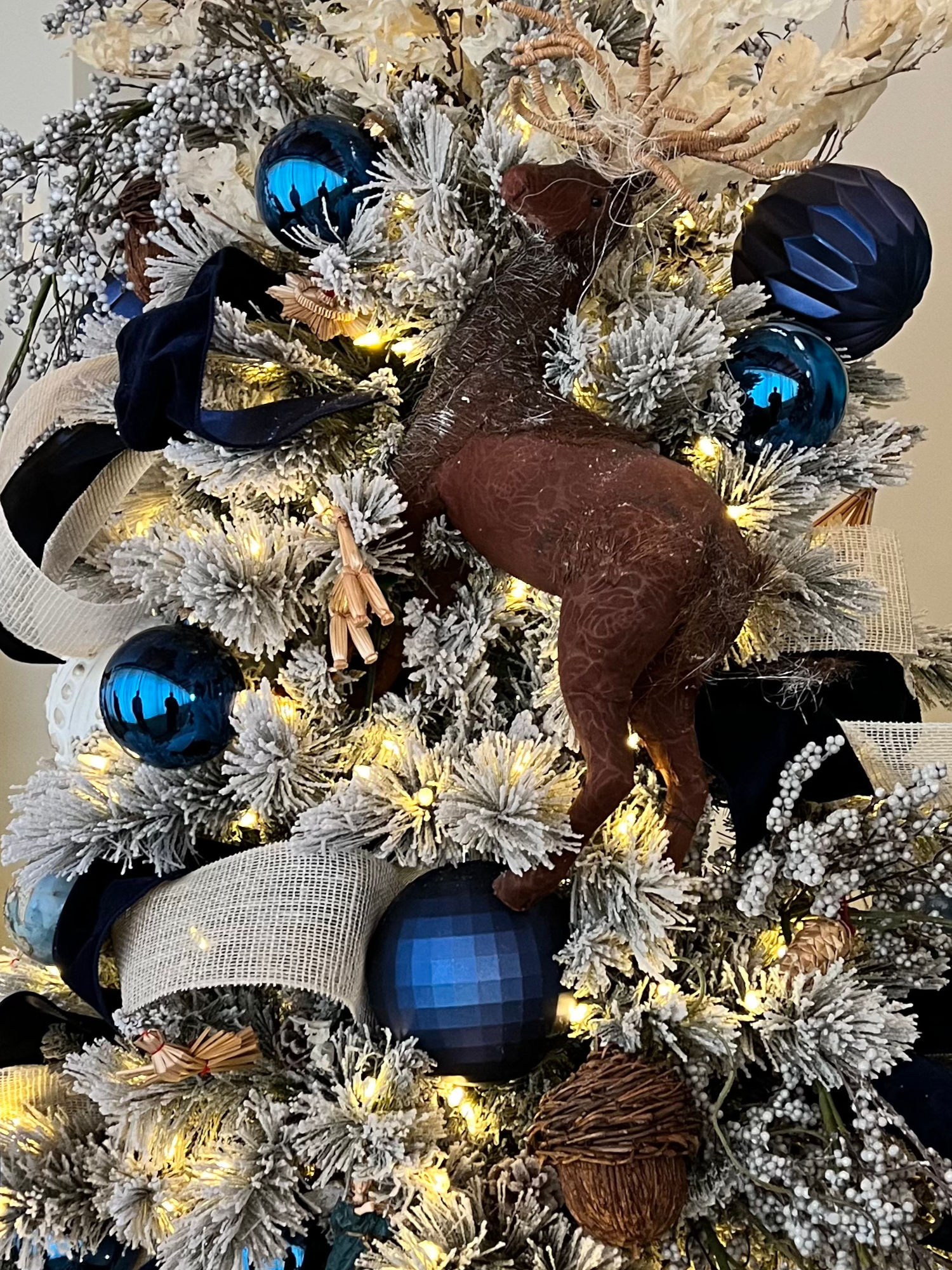
Reddit r/FinlandTraditional Finnish Christmas Food
Can anyone give me some ideas for what people in Finland traditionally eat for Christmas dinner? Every year I do a foreign Christmas dish along with our meal and I'd like to try a Finnish dish this year being the Finnophile I am. Any suggestions appreciated! Recipes too!
- Porkkanalaatikko (carrot casserole), Imelletty perunalaatikko (sweet tasting potato casserole) and Joulukinkku (christmas roasted ham). All these with some Finnish mustard is just delicious :) Especially looking forward to perunalaatikko coming back to the stores. (I'm a foreigner, and quite many Finns say they are sick of these things, but it's all still new to me and I love it)
- My mom used to have cold smoked salmon every Christmas. I recommend this if you and your family loves fish.
- Gravlax is something we always have as a starter. We start with the gravlax, and different kind of atlantic herring dishes, and of course the roe from a Coregonus albula - expensive but delicious! here are some recipes http://www.dlc.fi/~marianna/gourmet/season1.htm
- Heh, heh. This reminds me of a christmas long past. We were a Finnish family living abroad, and my mum had proudly found a way to get porkkanalaatikko and lanttulaatikko imported for us. Then she put them in the oven, mistakenly set the oven to self-clean. 30 minutes at 12 billion C with the oven door auto-locked. There was nothiung left but shattered hopes and christmas dreams.
- Start the day with rice porridge (don't forget to add pinch of cinnamon and sugar) for breakfast. We usually have Lanttulaatikko along with other casseroles. We used to have lutefisk with it's white sauce (=Bechamel?) and allspice but as lutefisk is awfull, we have skipped the lutefisk completely. You can make brown sauce from the skimmed stock of the ham, but we usually just have white sauce only.
- Finnish Christmas food is historically based on poorness and isolation. These potato, carrot and turnip casseroles are from the era when Finnish were farmers/ hunters. And the ham is from fall-slaughter (syys-teurastus) if the family could afford to kill a pig.
Then there is some Swedish heritage food like the "rosolli", "glogi", spices and pastries (joulutorttu etc.).
Traditionally Christmas was the celebration of the years shortest day (21.12 winter solstice) and it changed slowly after Christian influence changed it to the birthday of Jesus. It's said that during that fest they drink "sahti", which is a brewed beer-like strong stuff.
The idea is that you can eat so much that you like. And the food was left to the table over night that you can go and eat more when ever you like. Also it was left for the Elves (tonttu) and they also gave food to the forest animals, like grain for the birds and elks, reindeers etc.
And don't forget to start the Christmas day morning with porridge (rice and milk/cream) with a single almond. He who would get that almond could have a wish for the next year... :)
- Don't forget rosolli, a kind of mixed veggie salad...
- Sweetend potato casserole. Basically, you boil potatoes (without salt), peel and mash them well, mix in some wheat flour, leave the thing in about 50 C overnight. The next day you add milk, salt, some syrup (if you want more/different kind of sweetness - the custom varies depending on the area) and butter until it's sort of runny, pour it into a pan, add some breadcrumbs with butter on top and put it in the oven to cook slowly for some hours at low heat (125 - 150 C).
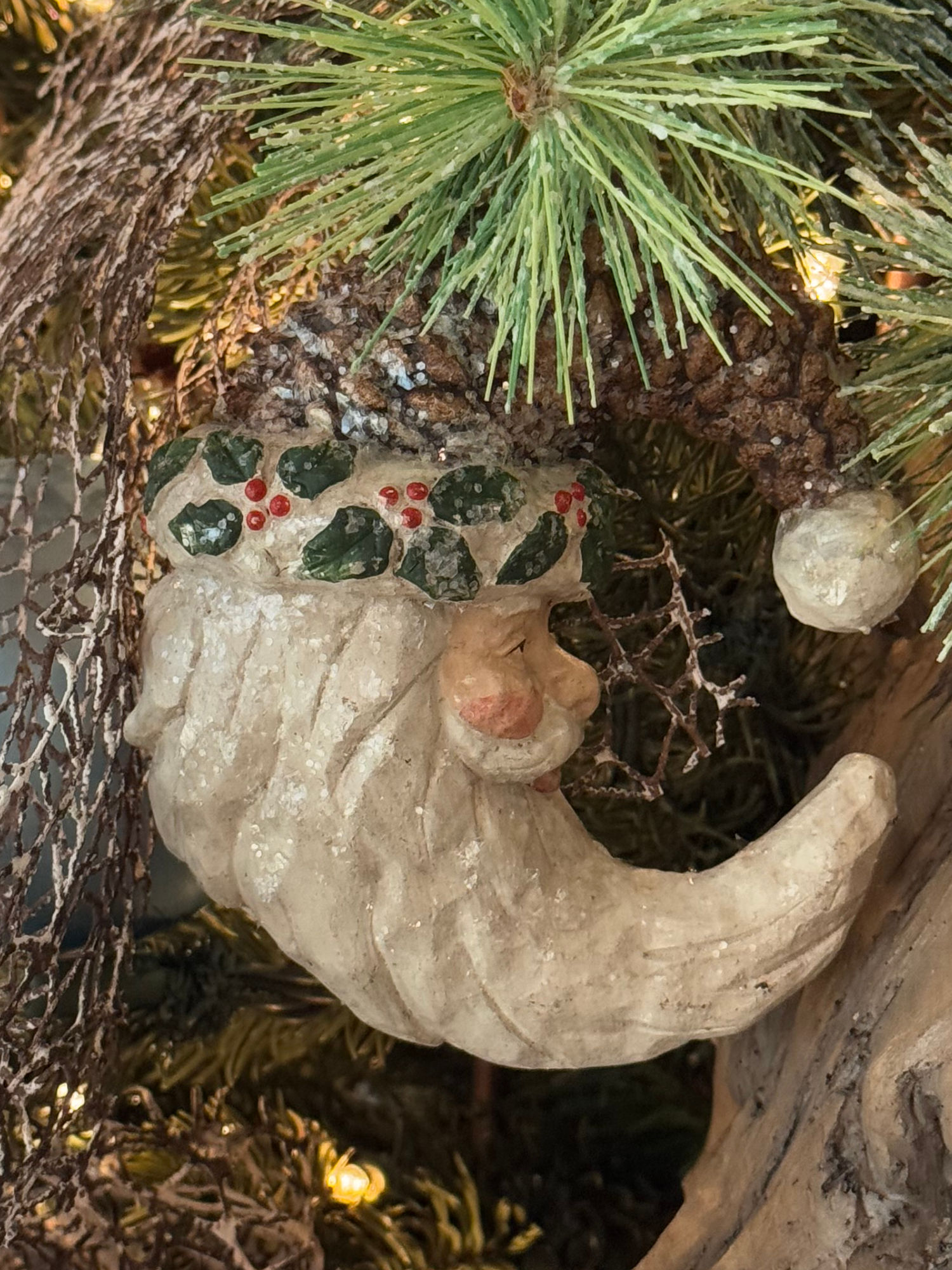
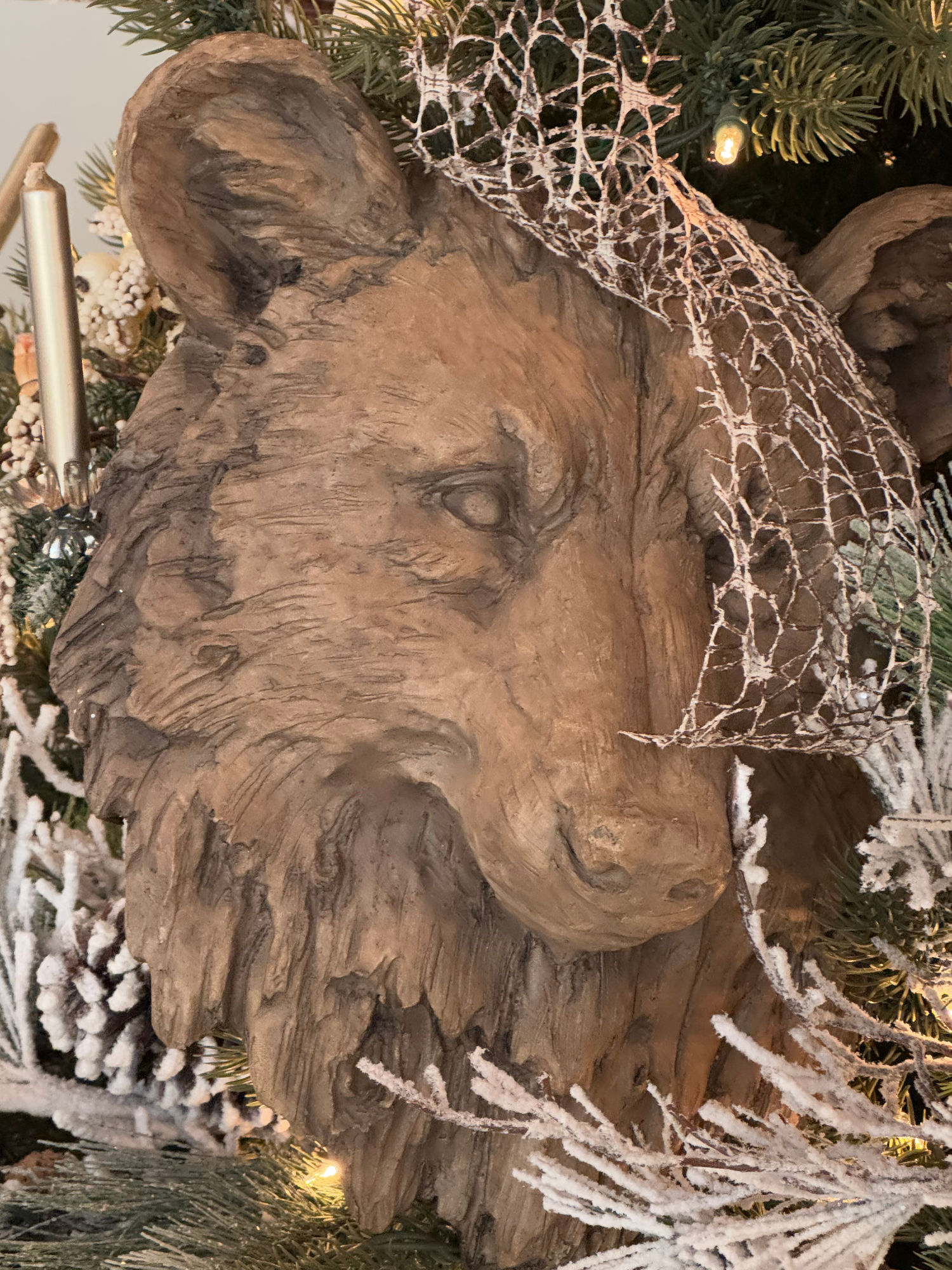
National GeographicIn 1927, Finland claimed to discover Santa's workshop.
Everyone knows the basics about Santa, the jolly man in a red suit that delivers gifts at Christmas. How a small town near the Arctic Circle in Finland became known as his "official hometown" proves a less familiar twist to the story.Santa was a marketing gimmick, based on a third-century, ancient bishop from Turkey known for secretly giving away his large inheritance. His random acts of kindness didn't go unnoticed, earning sainthood and global celebration on the date of his death, December 6. This story of Saint Nicolas then traveled with Dutch immigrants to the US, where "Sinterklaas" was moulded into the visual image of Santa we all recognize today. Without much of a backstory to Santa Claus, an illustration in Harpers magazine from 1866 is credited with establishing the legend of his home at the "North Pole."
In 1927, Markus Rautio–a Finnish radio broadcaster known as "Uncle Marcus"–claimed on-air that Santa's workshop was discovered in in Rovaniemi, Finland. The government of the province, Lapland, declared itself "Santa Claus Land" decades later to boost tourism. Santa Claus Village opened just outside Rovaniemi in 1985.
Of course there are other places that lay claim to a Santa or Saint Nick association: Korvatunturi, Finland, claims to be his real home and that Rovaniemi was just created for tourists. The Church of Saint Nicolas in Demre, Turkey, contains his sarcophagus but not his bones. There's a multitude of pop-ups around the world, but the Santa in Rovaniemi differs in that the man is marketed as the original, and tourists can visit him throughout the year.
Christmas lasts all year around in Rovaniemi, a place of anticipation. Even the hardcore cynic will be moved by the "Christmas Spirit." After visiting Santa, families can dine in the snowglobe atmosphere of the Ice Restaurant and Ice Bar in Snowman World. Leaving from the Elf's Yard, kids can cross the Arctic Circle with traditional Lappish wooden skis. The region forms part of the natural habitat for roaming reindeer–unlike the North Pole.
Santa Claus's Main Post Office, with a special Arctic Circle stamp, received about half a million letters last year. In reality, this figure is much higher since post offices around the world have their own systems of dealing with letters addressed to Santa. Santa in Rovaniemi received 18 million letters from 199 different countries to date, and at Christmastime, can receive 32,000 letters per day, with the most letters arriving from China.
An official reply from Santa Claus will set people back more than 10 dollars (8.90 euros). It is free to see him, but tourists can't take photos or videos, although you can buy the official one. In high season (November through March), prices reach more than 50 dollars (45 euros).
There are no detailed statistics on how many people visit Santa Claus, however, during the busiest days he meets thousands of people. Last year, 520,000 people visited Santa Claus Village. Many tour operators offer seasonal charter flights to Rovaniemi, mainly during the Christmas and winter season.
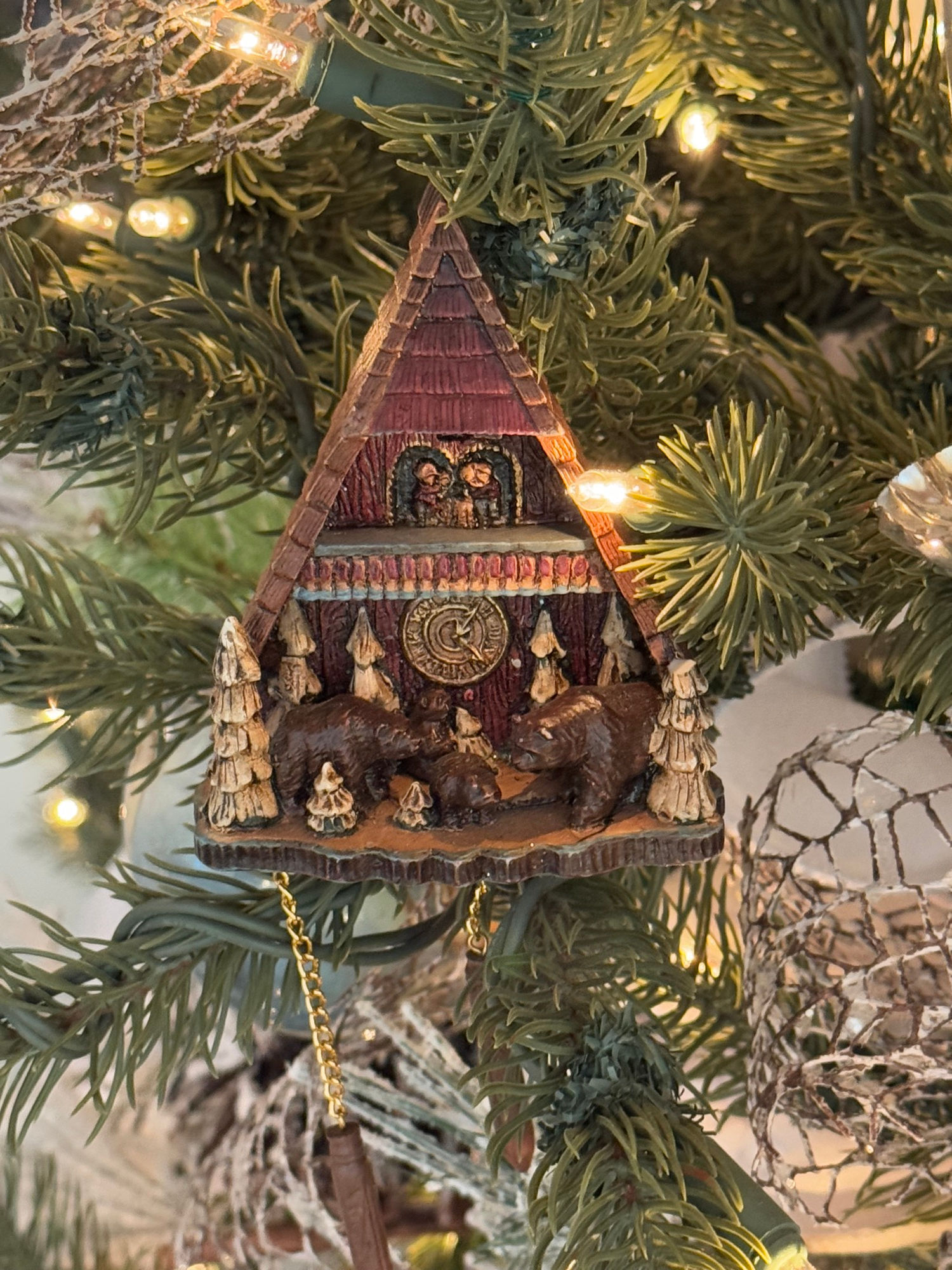
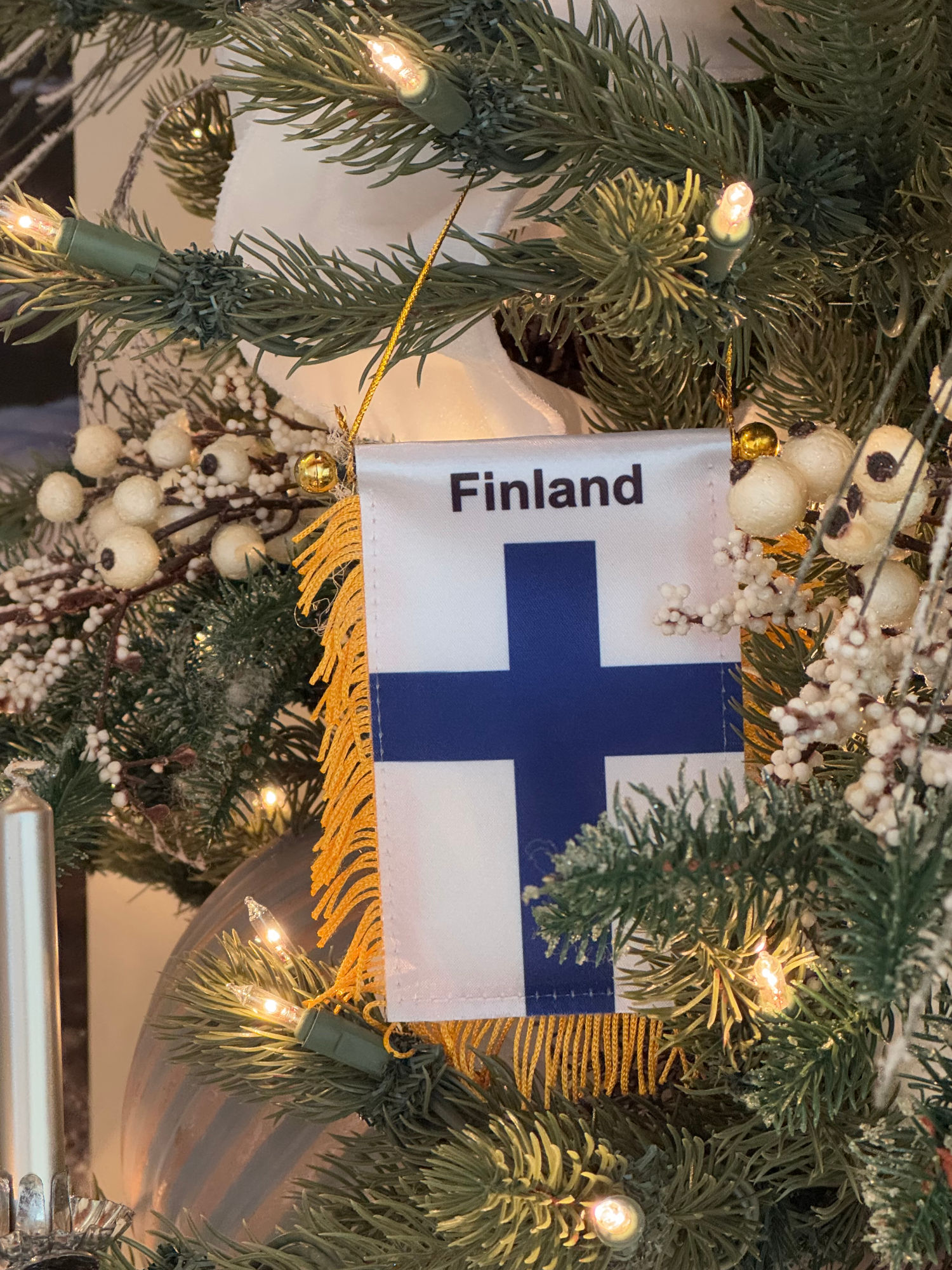
CHEF'S PENCILFinnish Christmas Foods
In Finland, Christmas Eve is when the magic happens. The day starts with... rice porridge! Traditionally, an almond is hidden in the porridge, and whoever gets it on their plate has good fortune for the next year. Christmas Eve porridge is served either with sugar and cinnamon, or with raisin fool, or a fool with dried fruits. Afterward, some folk go to church, some go to the cemetery, others just enjoy preparing the upcoming meal.Christmas dinner is usually served in the afternoon or early evening, and enjoyed even for hours. First, it kicks off with a vast table of appetizers such as herring or other fish prepared in numerous ways, salads, cheeses, cold cuts, and more. Then it is time for the high point of the meal, the Christmas ham. We have never gone for turkey much, and I doubt there is any other time in the year where stores sell out of ham! After the feast, it's usually time for Santa Claus to show up and bring presents, which we open in the evening. Food used to be left on the table for the house-elf to enjoy, but these days we just leave it there for us to enjoy. After the kids go to bed, it's time for the adults to go for seconds!
Top 20 Christmas Foods in Finland
- Rosolli – Herring and Beetroot Salad
This is a dish you can see everywhere, and it carries a long Finnish tradition. It was first eaten in 18th century in upper-class homes, spreading to the common people in the 19th century.- Herring
Always pickled, Herring can be found in Finland in numerous different flavors and sauces.- Salmon
Salmon is found on Christmas tables in a variety of forms: cured, smoked, cold-smoked, oven-baked salmon, or dry-salted.- Lutefisk
Lutefisk is dried whitefish. It is made from aged stockfish or dried and salted cod, pickled in lye. It is gelatinous in texture after being rehydrated for days prior to eating. This is something of a divider – you either love it or hate it.- Rice Porridge
Traditionally, Christmas porridge has always been made from oat or barley. Then, in the 19th century, rice was imported to Finland, and it quickly replaced oat and barley at Christmas, since it was expensive and thus considered a festive ingredient. Despite rice becoming commonplace and less exotic over the 20th century, this version of porridge is still going strong at the Christmas table.- Raisin / Fruit Soup
In the late 1880s, colonial products became cheaper, and even poorer households were able to buy nuts, almonds, dried fruits, and raisins. Soups made from raisins, dried plums, or dried fruits were at first luxury for the upper class, but became available and spread more widely in the 1920s and 1930s.- Casseroles
Regardless of the type, casseroles are served in every household. The most casseroles are potato, sweetened potato, swede, carrot, and liver. Nowadays there are also new flavors, such as beetroot and sweet potato.- Pate
Pates are usually made from liver, but recent trends have led to them being made also from fish or even vegetables. Finns really enjoy spreading some pate at Christmastime.- Ham
The Christmas ham is the crown jewel of the Christmas meal in almost all the Nordic countries. This meal does not have a long tradition, however. In the 1800s pork, beef, or lamb, was eaten at the Christmas table, either dried, smoked, or fried. Pork took over as main meat in the 1900s, and, to most Finnish folk, is a tradition that just cannot be skipped.- Gingerbread
Christmas is not Christmas without gingerbread cookies. We bake them weeks before Christmas, and usually end up baking another batch before Christmas. We decorate them with icing, candy, build gingerbread houses, sleighs, churches, castles, you name it. The gingerbread house gets its model from the old German fairytale Hansel and Gretel.- Christmas Pastry
A sweet treat made from puff pastry and prune jam. Delish! Traditionally, the pastry is cut out to look like a star, and a dollop of jam is slapped on top. Paste it with egg, put in the oven, and dust with confectioner's sugar. Perfect.- Christmas Ale
Drinking ale on Christmas is a tradition in Nordic countries. Even the Vikings were known to "drink Christmas". These days you can find varieties in flavor and style, from pale ales to porters.- Glogi – Mulled Wine
Mulled wine has been around in the Finland–Sweden region since the middle ages. It was created when a poor-quality wine was seasoned with cinnamon, cloves, cardamom, and orange zest. Today it is enjoyed everywhere.- Cakes
In every household different kinds of fruit cakes and spiced cakes are a must. Finnish Christmas cakes are usually made with dates, nuts candied peel, or spices.- Chocolates
There is a multitude of chocolates available during Christmas, with numerous fillings: liqueur, truffle, fudge, caramel, you name it. We also have our own chocolate brand, Fazer, which is delicious.- Salad
Different kinds of salads are also served at Christmas. Green salads, Waldorf salad, mushroom salad.- Buns
Buns are also an essential part of the dessert table. In addition to the buns and cinnamon rolls we traditionally make, new variations have been introduced. One of the most popular ones is a bun baked with Nutella.- Karelian Pastry
These are traditional Finnish pastries eaten all year round, but at Christmas as well. They feature a pastry made from rye dough, and are filled with either mashed potato or rice, rice being the more traditional choice.- Coffee
Even though mulled wine has surpassed coffee at the Christmas table, make no mistake; we still have coffee with our Christmas meal. It makes sense, since Finland has long been the biggest consumer of roasted coffee in the world.- Finnish Bread
Bread is a big part of the meal as well. We have loaves that are made with sour milk and dark syrup, rye bread, and something that's called "Islanders bread".
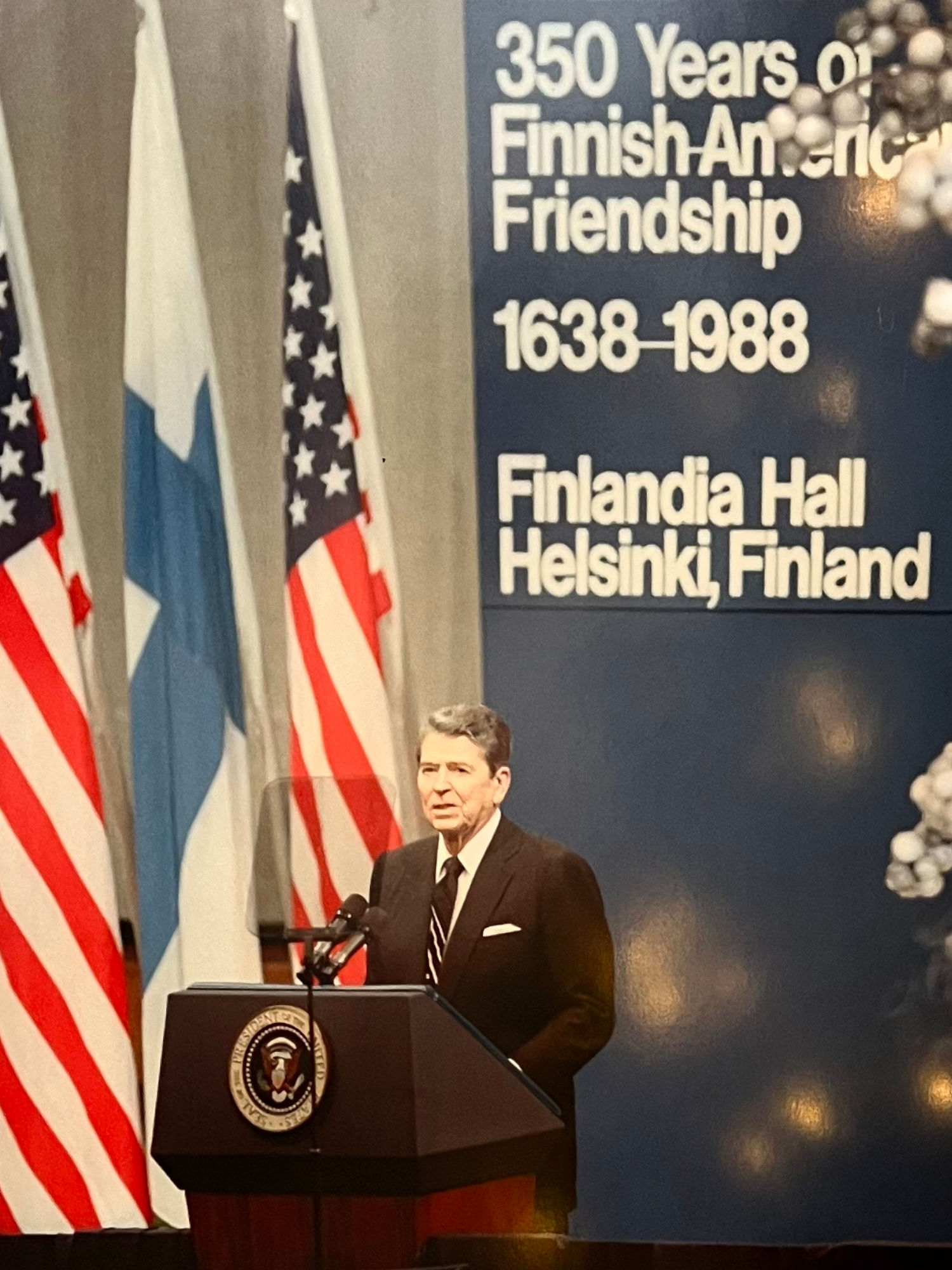
While resting en route to the U.S. - Soviet Summit, President Reagan speaks at Finlandia Hall, the historic building where the Helsinki Final Act was signed in 1975.
Reagan's Daily DiaryFriday, May 27, 1988
Up at 9:30 this time-no hiking clothes this time. We dressed up & were driven to the palace. The streets were lined with people-they are warm & friendly. We were greeted by Pres. & Mrs. Koivisto. Then a brief meeting with him & his team & ours. Then all of us went into a pleasant lunch-they served Calif. wines. After lunch it was back to the guest house. An early dinner & more news reels-then word came our Sen. passed or I should say Ratified the I.N.F. treaty. I called Sens. Byrd & Dole to thank them & invited them to bring the papers & join me for the ceremony on Wed.After our early dinner Nancy & I took turns having a massage by a masseuse recommended by Geo. Shultz. And then to bed. Finally got to sleep.
Key Facts
- President and Mrs. Reagan visit with President and Mrs. Koivisto, of Finland.
- The U.S. Senate votes 93-5 and ratifies a treaty eliminating medium-range nuclear missiles.
Ronald ReaganRemarks to the Paasikivi Society and the League of Finnish-American Societies in Helsinki, FinlandMay 27, 1988
Mr. President, Mr. Speaker, Mr. Prime Minister, and ladies and gentlemen, let me begin by saying thank you to our hosts, the Finnish Government, the Paasikivi Society, and the League of Finnish-American Societies. It's a particular honor for me to come here today. This year -- the Year of Friendship, as Congress has proclaimed it, between the United States and Finland -- this year marks the 350th anniversary of the arrival of the first Finns in America and the establishment of a small Scandinavian colony near what is today Wilmington, Delaware -- an ancient people in a new world. And that is the story not only of those Finns but of all the peoples who braved the seas to settle in and build my country, a land of freedom for a nation of immigrants.
Yes, they founded a new world, but as they crossed the oceans, the mountains, and the prairies, those who made America carried the old world in their hearts -- the old customs, the family ties, and most of all the belief in God, a belief that gave them the moral compass and ethical foundation by which they explored an uncharted frontier and constructed a government and nation of, by, and for the people.
And so, although we Americans became a new people, we also remain an ancient one, for we're guided by ancient and universal values, values that Prime Minister Holkeri spoke of in Los Angeles this February when, after recalling Finland's internationally recognized position of neutrality, he added that Finland is "tied to Western values of freedom, democracy, and human rights." And let me add here, that for America those ties are also the bonds of our friendship. America respects Finland's neutrality. We support Finland's independence. We honor Finland's courageous history. We value the creative statesmanship that has been Finland's gift to world peace. And in this soaring hall, which is the great architect Alvar Aalto's statement of hope for Finland's future, we reaffirm our hope and faith that the friendship between our nations will be unending.
We're gathered here today in this hall because it was here, almost 13 years ago, that the 35 nations of the Conference on Security and Cooperation in Europe signed the Helsinki Final Act, a document that embodies the same ethical and moral principles and the same hope for a future of peace that Finns and so many other European immigrants gave America. The Final Act is a singular statement of hope. Its "three baskets" touch on almost every aspect of East-West relations, and taken together form a kind of map through the wilderness of mutual hostility to open fields of peace and to a common home of trust among all of our sovereign nations -- neutrals, nonaligned, and alliance members alike. The Final Act sets new standards of conduct for our nations and provided the mechanisms by which to apply those standards.
Yes, the Final Act goes beyond arms control, once the focus of international dialog. It reflects a truth that I have so often noted: Nations do not distrust each other because they are armed; they are armed because they distrust each other. The Final Act grapples with the full range of our underlying differences and deals with East-West relations as an interrelated whole. It reflects the belief of all our countries that human rights are less likely to be abused when a nation's security is less in doubt; that economic relations can contribute to security, but depend on the trust and confidence that come from increasing ties between our peoples, increasing openness, and increasing freedom; and that there is no true international security without respect for human rights. I can hardly improve on the words President Koivisto used in this hall 2 years ago when he recalled that "security is more than the protection of borders and social structures. It is emphasized in the Final Act that individual persons who live in the participating states have to feel in their own lives security which is based on respect for fundamental human rights and basic freedoms."
And beyond establishing these integrated standards, the Final Act establishes a process for progress. It sets up a review procedure to measure performance against standards. And despite the doubts of the critics -- for the past 13 years, the signatory states have mustered the political will to keep on working and making progress.
Let me say that it seems particularly appropriate to me that the Final Act is associated so closely with this city and this country. More than any other diplomatic document, the Final Act speaks to the yearning that Finland's longtime President, Urho Kekkonen, spoke of more than a quarter century ago when he said, in his words: "It's the fervent hope of the Finnish people that barriers be lowered all over Europe and that progress be made along the road of European unity." And he added that this was, as he put it, "for the good of Europe, and thus of humanity as a whole." Well, those were visionary words. That vision inspired and shaped the drafting of the Final Act and continues to guide us today.
Has the Final Act and what we call the Helsinki process worked or not? Many say it hasn't, but I believe it has. In the security field, I would point to the most recent fruit of the process: the Stockholm document of confidence- and security-building measures in Europe. This agreement lays down the rules by which our 35 states notify each other of upcoming military activities in Europe; provides detailed information on these activities in advance; and lets the others know their plans for very large military activities 1 or 2 years in advance and agrees not to hold such maneuvers unless this notice is given; invites observers to their larger military activities; and permits on-site inspections to make sure the agreement is honored.
I am happy to note that since our representatives shook hands to seal this agreement a year and a half ago, all 35 states have, by and large, honored both the letter and the spirit of the Stockholm document. The Western and neutral and nonaligned states have set a strong example in providing full information about their military activities. In April, Finland held its first military activity subject to the Stockholm notification requirements and voluntarily invited observers to it. The Soviet Union and its allies also have a generally good record of implementation, though less forthcoming than the West. Ten on-site inspections have been conducted so far, and more and more states are exercising their right to make such inspections. I can't help but believe that making inspections a matter of routine business will improve openness and enhance confidence.
Nor was Stockholm the end of the process. In Vienna all 35 signatory states are considering how to strengthen the confidence- and security-building measures in the context of a balanced outcome at the CSCE followup meeting that includes significant progress on human rights. In the economic field, as in the security field, I believe there has been progress, but of a different kind. Issues and negotiations regarding security are not simple, but military technology makes arms and armies resemble each other enough so that common measures can be confidently applied. Economic relations, by contrast, are bedeviled by differences in our systems. Perhaps increases in nonstrategic trade can contribute to better relations between East and West, but it's difficult to relate the state-run economies of the East to the essentially free-market economies of the West. Perhaps some of the changes underway in the state-run economies will equip them better to deal with our businessmen and open new arenas for cooperation. But our work on these issues over the years has already made us understand that differences in systems are serious obstacles to expansion of economic ties, and since understanding of unpleasant realities is part of wisdom, that, too, is progress.
The changes taking place in the Eastern countries of the continent go beyond changes in their economic systems and greater openness in their military activities. Changes have also begun to occur in the field of human rights, as was called for in the Final Act. The rest of us would like to see the changes that are being announced actually registered in the law and practice of our Eastern partners and in the documents under negotiation in the Vienna followup to the Helsinki conference.
Much has been said about the human rights and humanitarian provisions in the Final Act and the failure of the Eastern bloc to honor them. Yet for all the bleak winds that have swept the plains of justice since that signing day in 1975, the accords have taken root in the conscience of humanity and grown in moral and, increasingly, in diplomatic authority. I believe that this is no accident. It reflects an increasing realization that the agenda of East-West relations must be comprehensive, that security and human rights must be advanced together or cannot truly be secured at all. But it also shows that the provisions in the Final Act reflect standards that are truly universal in their scope. The accords embody a fundamental truth, a truth that gathers strength with each passing season and that will not be denied -- the truth that, like the first Finnish settlers in America, all our ancient peoples find themselves today in a new world and that, as those early settlers discovered, the greatest creative and moral force in this new world, the greatest hope for survival and success, for peace and happiness, is human freedom.
Yes, freedom -- the right to speak, to print; the right to worship, to travel, to assemble; the right to be different, the right, as the American philosopher Henry David Thoreau wrote, "to step to the music of a different drummer" -- this is freedom as most Europeans and Americans understand it and freedom as it is embodied in the Universal Declaration of Human Rights and, yes, in the Helsinki accords. And far more than the locomotive or the automobile, the airplane or the rocket, more than radio, television, or the computer, this concept of liberty is the most distinct, peculiar, and powerful invention of the civilization we all share.
Indeed, without this freedom there would have been no mechanical inventions, for inventions are eccentricities. The men and women who create them are visionaries, just like artists and writers. They see what others fail to see and trust their insights when others don't. The same freedom that permits literature and the arts to flourish; the same freedom that allows one to attend church, synagogue, or mosque without apprehension; that same freedom from oppression and supervision is the freedom that has given us, the peoples of Western Europe and North America, our dynamism, our economic growth, and our inventiveness. Together with Japan and Australia and many others, we have lived in this state of freedom, this house of democracy, since the end of the Second World War.
The house of democracy is a house whose doors are open to all. Because of it, because of the liberty and popular rule we've shared, today we also share a prosperity more widely distributed and extensive, a political order more tolerant and humane than has ever before been known on Earth. To see not simply the immediate but the historic importance of this, we should remember how far many of our nations have traveled and how desolate the future of freedom and democracy once seemed. For much of this century, the totalitarian temptation, in one form or another, has beckoned to mankind, also promising freedom, but of a different kind than the one we celebrate today. This concept of liberty is, as the Czechoslovak writer Milan Kundera has put it, "the age-old dream of a world where everybody would live in harmony, united by a single common will and faith, without secrets from one another" -- the freedom of imposed perfection.
Fifty, forty, even as recently as thirty years ago, the contest between this utopian concept of freedom on one hand and the democratic concept of freedom on the other seemed a close one. Promises of a perfect world lured many Western thinkers and millions of others besides. And many believed in the confident prediction of history's inevitable triumph. Well, few do today. Just as democratic freedom has proven itself incredibly fertile -- fertile not merely in a material sense but also in the abundance it has brought forth in the human spirit -- so, too, utopianism has proven brutal and barren.
Albert Camus once predicted that, in his words, "when revolution in the name of power and of history becomes a murderous and immoderate mechanism, a new rebellion is consecrated in the name of moderation of life." Isn't this exactly what we see happening across the mountains and plains of Europe and even beyond the Urals today? In Western Europe, support for utopian ideologies, including support among intellectuals, has all but collapsed, while in the nondemocratic countries, leaders grapple with the internal contradictions of their system and some ask how they can make that system better and more productive. In a sense, the front line in the competition of ideas that has played in Europe and America for more than 70 years has shifted East. Once it was the democracies that doubted their own view of freedom and wondered whether utopian systems might not be better. Today the doubt is on the other side.
In just 2 days, I will meet in Moscow with General Secretary Gorbachev. It will be our fourth set of face-to-face talks since 1985. The General Secretary and I have developed a broad agenda for U.S.-Soviet relations, an agenda that is linked directly to the agenda of the Final Act. Yes, as does the Final Act, we will discuss security issues. We will pursue progress in arms reduction negotiations across the board and continue our exchanges on regional issues. Yes, we will also discuss economic issues, although, as in the Helsinki process, we have seen in recent years how much the differences in our systems inhibit expanded ties and how difficult it is to divorce economic relations from human rights and other elements of that relationship. And, yes, as our countries did at Helsinki, we will take up other bilateral areas as well, including scientific, cultural, and people-to-people exchanges, where we've been hard at work identifying new ways to cooperate. In this area, in particular, I believe we'll see some good results before the week is over.
And like the Final Act, our agenda now includes human rights as an integral component. We have developed our dialog and put in place new mechanisms for discussion. The General Secretary has spoken often and forthrightly on the problems confronting the Soviet Union. In his campaign to address these shortcomings, he talks of glasnost and perestroika, openness and restructuring, words that to our ears have a particularly welcome sound. And since he began his campaign, things have happened that all of us applaud. The list includes the release from labor camps or exile of people like Andrei Sakharov, Irina Ratushinskaya, Anatoly Koryagin, Josef Begun, and many other prisoners of conscience; the publication of books like "Dr. Zhivago" and "Children of the Arbat"; the distribution of movies like "Repentance" that are critical of aspects of the Soviet past and present; allowing higher levels of emigration; greater toleration of dissent; General Secretary Gorbachev's recent statements on religious toleration; the beginning of Soviet withdrawal from Afghanistan.
All this is new and good. But at the same time, there is another list, defined not by us but by the standards of the Helsinki Final Act and the sovereign choice of all participants, including the Soviet Union, to subscribe to it. We need look no further through the Final Act to see where Soviet practice does not -- or does not yet -- measure up to Soviet commitment. Thirteen years after the Final Act was signed, it's difficult to understand why cases of divided families and blocked marriages should remain on the East-West agenda or why Soviet citizens who wish to exercise their right to emigrate should be subject to artificial quotas and arbitrary rulings. And what are we to think of the continued suppression of those who wish to practice their religious beliefs? Over 300 men and women whom the world sees as political prisoners have been released. There remains no reason why the Soviet Union cannot release all people still in jail for expression of political or religious belief, or for organizing to monitor the Helsinki Act.
The Soviets talk about a "common European home" and define it largely in terms of geography. But what is it that cements the structure of clear purpose that all our nations pledged themselves to build by their signature of the Final Act? What is it but the belief in the inalienable rights and dignity of every single human being? What is it but a commitment to true pluralist democracy? What is it but a dedication to the universally understood democratic concept of liberty that evolved from the genius of European civilization? This body of values -- this is what marks, or should mark, the common European home.
Mr. Gorbachev has spoken of, in his words, "the artificiality and temporariness of the bloc-to-bloc confrontation and the archaic nature of the `iron curtain."' Well, I join him in this belief and welcome every sign that the Soviets and their allies are ready not only to embrace but to put into practice the values that unify and, indeed, define contemporary Western European civilization and its grateful American offspring.
Some 30 years ago -- another period of relative openness -- the Italian socialist Pietro Nenni, long a friend of the Soviet Union, warned that it was wrong to think that the relaxation could be permanent in, as he said, "the absence of any system of judicial guarantees." And he added that only democracy and liberty could prevent reversal of the progress underway.
There are a number of steps, which, if taken, would help ensure the deepening and institutionalization of promising reforms. First, the Soviet leaders could agree to tear down the Berlin Wall and all barriers between Eastern and Western Europe. They could join us in making Berlin itself an all-European center of communications, meetings, and travel. They could also give legal and practical protection to free expression and worship. Let me interject here that at one time Moscow was known as the City of the Forty Forties because there were 1,600 belfries in the churches of the city. The world welcomes the return of some churches to worship after many years, but there are still relatively few functioning churches and almost no bells. Mr. Gorbachev recently said, as he put it, "Believers are Soviet people, workers, patriots, and they have the full right to express their conviction with dignity." Well, I applaud Mr. Gorbachev's statement. What a magnificent demonstration of good will it would be for the Soviet leadership for church bells to ring out again not only in Moscow but throughout the Soviet Union.
But beyond these particular steps, there's a deeper question. How can the countries of the East not only grant but guarantee the protection of rights? The thought and practice of centuries has pointed the way. As the French constitutional philosopher Montesquieu wrote more than 200 years ago, "There is no liberty if the judiciary power be not separated" from the other powers of government. And like the complete independence of the judiciary, popular control over those who make the laws provides a vital, practical guarantee of human rights. So does the secret ballot. So does the freedom of citizens to associate and act for political purposes or for free collective bargaining.
I know that for the Eastern countries such steps are difficult, and some may say it's unrealistic to call for them. Some said in 1975 that the standards set forth in the Final Act were unrealistic, that the comprehensive agenda it embodied was unrealistic. Some said, earlier in this decade, that calling for global elimination of an entire class of U.S. and Soviet intermediate-range nuclear missiles was unrealistic, that calling for 50-percent reductions in U.S. and Soviet strategic offensive arms was unrealistic, that the Soviets would never withdraw from Afghanistan. Well, is it realistic to pretend that rights are truly protected when there are no effective safeguards against arbitrary rule? Is it realistic, when the Soviet leadership itself is calling for glasnost and democratization, to say that judicial guarantees or the independence of the judiciary or popular control over those who draft the laws or freedom to associate for political purposes are unrealistic? And finally, is it realistic to say that peace is truly secure when political systems are less than open?
We believe that realism is on our side when we say that peace and freedom can only be achieved together, but that they can indeed be achieved together if we're prepared to drive toward that goal. So did the leaders who met in this room to sign the Final Act. They were visionaries of the most practical kind. In shaping our policy toward the Soviet Union, in preparing for my meetings with the General Secretary, I have taken their vision -- a shared vision, subscribed to by East, West, and the proud neutral and nonaligned countries of this continent -- as my guide. I believe the standard that the framers of the Final Act set, including the concept of liberty it embodies, is a standard for all of us. We can do no less than uphold it and try to see it turn, as the Soviets say, into "life itself."
We in the West will remain firm in our values, strong and vigilant in defense of our interests, ready to negotiate honestly for results of mutual and universal benefit. One lesson we drew again from the events leading up to the Intermediate-range Nuclear Forces treaty was that, in the world as it is today, peace truly does depend on Western strength and resolve. It is a lesson we will continue to heed.
But we're also prepared to work with the Soviets and their allies whenever they're ready to work with us. By strength we do not mean diktat, that is, an imposed settlement; we mean confident negotiation. The road ahead may be long, but not as long as our countries had before them 44 years ago when Finland's great President J.K. Paasikivi, told a nation that had shown the world uncommon courage in a harrowing time: "A path rises up to the slope from the floor of the valley. At times the ascent is gradual, at other times steeper. But all the time one comes closer and closer to free, open spaces, above which God's ever brighter sky can be seen. The way up will be difficult, but every step will take us closer to open vistas."
I believe that in Moscow Mr. Gorbachev and I can take another step toward a brighter future and a safer world. And I believe that, for the sake of all our ancient peoples, this new world must be a place both of democratic freedom and of peace. It must be a world in which the spirit of the Helsinki Final Act guides all our countries like a great beacon of hope to all mankind for ages to come.
Thank you, and God bless you. And bear with me now -- Onnea ja menestysta koko Suomen kansalle [Good luck and success to the entire Finnish people].
NOTEThe President spoke at 3:05 p.m. in Finlandia Hall. In his opening remarks, he referred to President Mauno Koivisto, Speaker of the Parliament Matti Ahde, and Prime Minister Harri Holkeri.
WIKIPEDIAThe Republic of Finland
A Nordic country in Northern Europe. It borders Sweden to the northwest, Norway to the north, and Russia to the east, with the Gulf of Bothnia to the west and the Gulf of Finland to the south, opposite Estonia. Finland covers an area of 338,145 square kilometres (130,559 sq mi) and has a population of 5.6 million.Finland was first settled around 9000 BC after the last Ice Age. During the Stone Age, various cultures emerged, distinguished by different styles of ceramics. The Bronze Age and Iron Ages were marked by contacts with other cultures in Fennoscandia and the Baltic region. From the late 13th century, Finland became part of Sweden as a result of the Northern Crusades. In 1809, as a result of the Finnish War, Finland became part of the Russian Empire as the autonomous Grand Duchy of Finland. During this period, Finnish art flourished and the idea of independence began to take hold. In 1906, Finland became the first European state to grant universal suffrage, and the first in the world to give all adult citizens the right to run for public office. Following the Russian Revolution of 1917, Finland declared its independence from Russia. In 1918 the young nation was divided by the Finnish Civil War. During the World War II, Finland fought against the Soviet Union in the Winter War and the Continuation War, and later against Nazi Germany in the Lapland War. As a result, it lost parts of its territory but retained its independence.
Finland remained a largely agricultural country until the 1950s. After World War II, it industrialised quickly and established an advanced economy, with a welfare state built on the Nordic model. This allowed the country to experience overall prosperity and high per capita income. During the Cold War, Finland officially embraced a policy of neutrality. Since then, it has become a member of the European Union in 1995, the Eurozone in 1999, and NATO in 2023.
The nation performs exceedingly well in national performance metrics, including education, economic competitiveness, civil liberties, quality of life, and human development.

- Finland is one of the world's northernmost countries.
- Helsinki is the capital and largest city.
- The vast majority of the population are ethnic Finns.
- Finnish and Swedish are the official languages, with Swedish being the native language of 5.2% of the population.
- Finland's climate varies from humid continental in the south to boreal in the north.
- The land cover is predominantly boreal forest biome, with more than 180,000 recorded lakes.
- Finland consists of 19 regions (maakunta). The counties are governed by regional councils which serve as forums of cooperation for the municipalities of a county.
- Finnish and Swedish are the official languages of Finland.
- In 2016, 69.3% of Finnish children were baptized and 82.3% were confirmed in 2012 at the age of 15, and over 90% of the funerals are Christian. With 3.9 million members, the Evangelical Lutheran Church of Finland is Finland's largest religious body; at the end of 2019, 68.7% of Finns were members of the church.
- The landscape is covered mostly by coniferous taiga forests and fens, with little cultivated land. Of the total area, 10% is lakes, rivers, and ponds, and 78% is forest. The forest consists of pine, spruce, birch, and other species. Finland is the largest producer of wood in Europe and among the largest in the world. The most common type of rock is granite. It is a ubiquitous part of the scenery, visible wherever there is no soil cover.
- The endangered Saimaa ringed seal, one of only three lake seal species in the world, exists only in the Saimaa lake system of southeastern Finland.
- The majority of international cargo shipments are handled at ports. Vuosaari Harbour in Helsinki is the largest container port in Finland. There is passenger traffic from Helsinki and Turku, which have ferry connections to Tallinn, Mariehamn, Stockholm and Travemunde. The Helsinki-Tallinn route is one of the busiest passenger sea routes in the world. Many of the world's biggest cruise ships, including MS Freedom of the Seas and the Oasis of the Seas have been built in Finnish shipyards.
- Finland is rated the least corrupt country in the world in the Corruption Perceptions Index
- The population of Finland is currently about 5.6 million. The current birth rate is 8.11 per 1,000 residents, for a fertility rate of 1.32 children born per woman, one of the lowest in the world, significantly below the replacement rate of 2.1. Finland has one of the oldest populations in the world, with a median age of 42.6 years.
- Since 2012, Finland has every time ranked at least in the top 5 of world's happiest countries in the annual World Happiness Report by the United Nations, as well as ranking as the happiest country in 2018.
- Helsinki Central Library Oodi was chosen as the best new public library in the world in 2019.
- The World Economic Forum ranks Finland's tertiary education No. 1 in the world. Around 33% of residents have a tertiary degree. In addition, 38% of Finland's population has a university or college degree, which is among the highest percentages in the world.
- Finland has the world's second highest per capita consumption of coffee. Milk consumption is also high, at an average of about 30 gallons, per person, per year, even though 17% of the Finns are lactose intolerant.
- Finland's men's national ice hockey team is ranked as one of the best in the world. The team has won four world championships (1995, 2011, 2019 and 2022) and one Olympic gold medal (2022).


